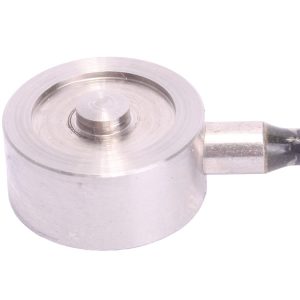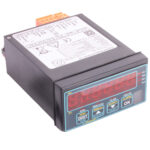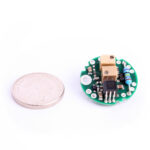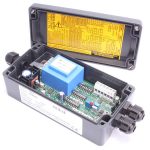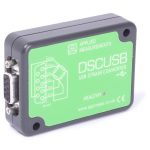At a Glance
- Capacities: 0-500N up to 0-2000N
- Output: 1.5mV/V nominal
- Environmental Protection: IP65
- Accuracy: <±0.5%/RC
- Integral Load Button
- Very Compact – At Ø15mm x 8mm height it easily fits into the smallest of spaces.
- Save on Installation Time – Ideal for retrofitting into existing designs.
- Optimum Performance Guaranteed – With its integral load button.
- Ideal for Compression Measurement with Limited Space.
Description
Applied Measurements CDF subminiature button load cell is designed for compression measurement applications where the absolute minimum of space is available for transducer mounting.
With capacities from 500N to 2000N available measuring just 15mm in diameter and 8mm in overall height, our CDF load cell is the smallest standard button load cell that we offer, however we can create smaller customised versions if required. If you need to measure lower or higher forces, the CDFM3 miniature button load cell is available in capacities from 0-100N right up 0-20kN and is slightly larger at 30mm diameter and 12mm in height.
The CDF subminiature button load cell is ideal for retro-fitment into industrial machines and process systems for monitoring and control purposes, or for incorporation into new machine designs.
Contact our expert sales team to check price and availability on the sensor you require, or call us on +44 (0) 1189 817339
Technical Specifications
| Rated Capacity (RC) | N | 0-500, 0-1000, 0-2000 |
|---|---|---|
| Operating Modes | Compression Only | |
| Sensitivity (RO) | mV/V | 1.5 nominal |
| Zero Balance/Offset | ±%/Rated Output | <1.0 |
| Non-Linearity | ±%/Rated Output (BFSL) | <0.50 |
| Hysteresis | %/Rated Output | <0.50 |
| Repeatability | %/Rated Output | <0.25 |
| Temperature Effect on Zero | ±%/Rated Output/ ˚C | <0.030 |
| Temperature Effect on Sensitivity | ±%/Applied Load/ ˚C | <0.005 |
| Input Resistance | Ohms | 375 typical |
| Output Resistance | Ohms | 350 typical |
| Insulation Resistance | Megohms | >5000 @ 50Vdc |
| Excitation Voltage | Volts AC or DC | 5 recommended (2-5 acceptable) |
| Operating Temperature Range | ˚C | -20 to +80 |
| Compensated Temperature Range | ˚C | 0 to +70 |
| Storage Temperature Range | ˚C | -20 to +80 |
| Safe Overload | % of Rated Capacity | 125 |
| Ultimate Overload | % of Rated Capacity | 150 |
| Deflection @ Rated Capacity | mm | <0.01 nominal |
| Fundamental Resonant Frequency* | kHz | >10 |
| IP Rating (Environmental Protection) | IP65 | |
| Weight | grams | 10 |
| Fatigue Life | 108 cycles typical (109 cycles on fatigue-rated version) | |
| Cable Length (as standard) | metres | 2 |
| Cable Type | 4-core screened, PVC, Ø3 typical via cable tube | |
| Construction Materials | Stainless Steel | |
| Resolution | 1 part in 250,000 (with appropriate instrumentation) | |
| *The resonant frequency is calculated with the body of the load cell attached to a large plate, ensuring that only the sensing element oscillates: This is vital to achieve the highest natural frequency and subsequent frequency response. | ||
Product Dimensions
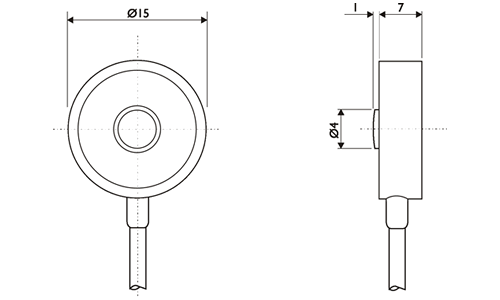
All dimensions are in mm
Wiring Details
| Wire | Designation |
|---|---|
| Red | +ve excitation |
| Black | -ve excitation |
| Green | +ve signal (compression) |
| White | -ve signal |
| Screen | To ground - not connected to load cell body |
Ordering Codes & Options
| Core Product | Capacity (inc Engineering Units) | Cable Length (m) | Specials Code | Example Result |
|---|---|---|---|---|
| CDF | 500N | 002 | 000 | CDF-500N-002-000 |
| CDF | 1000N | 002 | 000 | CDF-1000N-002-000 |
| CDF | 2000N | 002 | 000 | CDF-2000N-002-000 |
Published Sensor Application Articles
Below is a published sensor application paper that shows you how the CDF subminiature button load cell could be used in a specific application. See our published sensor application articles page for many more.
By Christine Dahl, Øyvind Sandbakk, Jørgen Danielsen and Gertjan Ettema, Centre for Elite Sports Research, Department of Neuromedicine and Movement Science, Faculty of Medicine, Norwegian University of Science and Technology, Trondheim, Norway. Front. Physiol., 21 February 2017. Available under a Creative Commons Attribution 4.0 International license.

